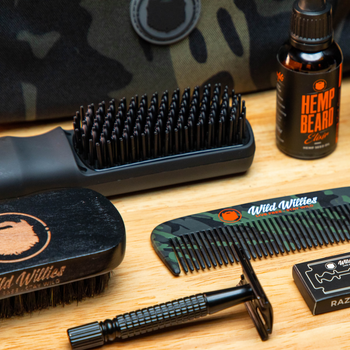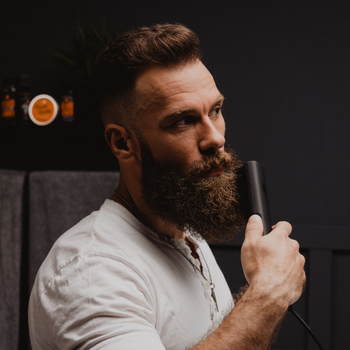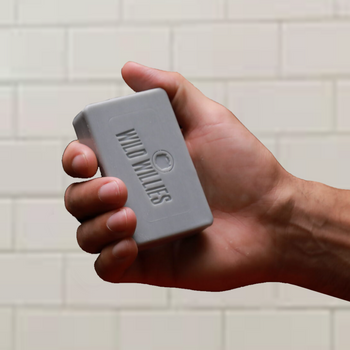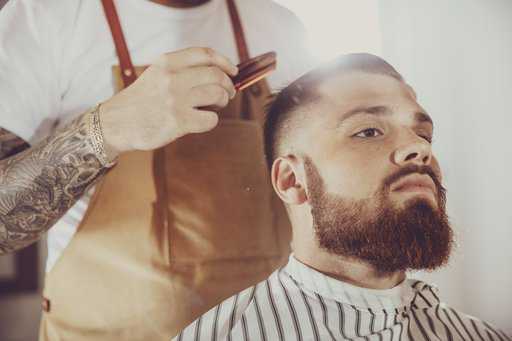Over the past year, men all over the world have been learning about taking care of their beards and hair at home, since the pandemic has made it hard or impossible for many to see their barber. By now, most of us have learned the basics of trimming and grooming our beards all on our own—in fact, by now you might feel like a verified beard expert.
However, there is one element of beard grooming that many men are nervous to try on their own—the fade. Fading is an important way that barbers are able to keep your beard looking neat even when it starts to get long. The biggest reason why most men don’t attempt the fade at home is that they don’t know how to do it, or they are afraid to mess up.
Luckily for you, the fade is not as hard as it looks. With the right tools and a little bit of patience, anyone can become a master of the fade.
The Art of the Fade
You might be asking yourself “what’s the big deal? Do I really need a fade?”
The short answer is, you probably need some basic fading skills more than you think. Fading serves a lot of purposes, and can be useful for a variety of beard types. Most importantly, fading smooths out the rough edges of your beard, helping with the appeal of the cheek line, neckline, and even sideburns.
When shaving at home, it is easy to make small mistakes when trimming the borders of your beard, particularly your neck. A fade can help make these edges less rough and less noticeable.
Finally, a fade can be useful to help sculpt the shape of your face, particularly as your beard starts to get longer. You may have noticed that for men with thinner faces, a thicker beard can help fill out the jaw and cheeks. For men with round faces, on the other hand, a fade around the cheeks and sideburns can help slim down the overall shape of the face.
The Right Tools for a Faded Beard
Just as with any other job, getting it done right means having the right tools on hand. Here are a few of the most important things you will need:
Electric trimmer: A trimmer is the most important tool that you will need to fade your beard. Without it, an authentic fade is pretty much impossible, as we will see when we discuss the process of fading in the next section. While there are very cheap options out there for electric razors, our suggestion is to spend a little bit more for a high-quality razor that won’t jam with hair.
Razor with beard shaping tool: Unless you are one of those few men blessed with the perfect natural neck and cheek line, the odds are that you will need a razor for the parts of your beard that need to be completely shaved off.
However, if you are looking for an ultra-neat cut that resembles the expertise offered by a barber, you will also want this beard shaping tool This can help you shave perfect lines around the sideburns and cheeks without making any unsightly mistakes.

How to Get the Perfect Beard Fade in Three Steps
Now that we have preparations out of the way, it’s time to talk about the fade itself.
The first step is to trim the edges of your beard as you normally would, bringing your neck and cheek line close to where it was the last time you shaved, but ideally leaving a little bit of stubble around the edges giving you wiggle room for when you start using the buzzer.
The next step is to use your electric trimmer to bring the whole beard down the length that you prefer it. If you have a longer beard, consider paring it down a bit in order to smooth the transition into a fade.
The last step is to use your electric trimmer with progressively shorter and shorter guards. Begin with a guard that is slightly shorter than the rest of your beard, and shave about an inch around the edge of your beard that you are attempting to fade. Next, use an even shorter guard to shave up about a half inch into the part that you just trimmed. Finally, use your shortest guard to trim down the last quarter inch.
Of course, you can adjust the steepness of the fade by using a greater number of guards to smooth the transitions, or by starting farther from or closer to the edge.
Alternative: Low Fade with Beard
The low fade is another common cut that barbers use. Basically, the low fade involves using the steps outlined above to fade both the sideburns and the hair around/above the ears. Start by fading down from where your sideburns meet your hair, then switch and do the exact same thing going up from the same line.
Learning how to stylize your beard is a lot easier when you can visualize it! Here's our video guide to trimming a beard fade:
Invest in the Best
Growing and maintaining a beard can be hard work, but with the right equipment even the hardest jobs can be a breeze. For anything from beard brushes to beard oil to shampoo and conditioner, check out the Wild Willies online store today!







